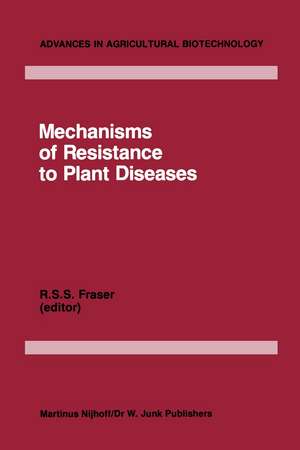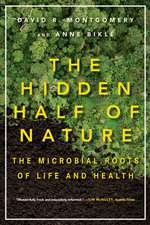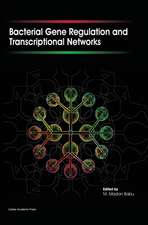Mechanisms of Resistance to Plant Diseases: Advances in Agricultural Biotechnology, cartea 17
Editat de R.S. Fraseren Limba Engleză Hardback – 30 sep 1985
| Toate formatele și edițiile | Preț | Express |
|---|---|---|
| Paperback (1) | 1225.31 lei 6-8 săpt. | |
| SPRINGER NETHERLANDS – 2 oct 2011 | 1225.31 lei 6-8 săpt. | |
| Hardback (1) | 1231.47 lei 6-8 săpt. | |
| SPRINGER NETHERLANDS – 30 sep 1985 | 1231.47 lei 6-8 săpt. |
Din seria Advances in Agricultural Biotechnology
-
 Preț: 386.00 lei
Preț: 386.00 lei - 15%
 Preț: 662.62 lei
Preț: 662.62 lei -
 Preț: 383.33 lei
Preț: 383.33 lei -
 Preț: 381.98 lei
Preț: 381.98 lei - 18%
 Preț: 1381.74 lei
Preț: 1381.74 lei - 18%
 Preț: 1217.41 lei
Preț: 1217.41 lei - 15%
 Preț: 641.38 lei
Preț: 641.38 lei - 18%
 Preț: 949.23 lei
Preț: 949.23 lei - 18%
 Preț: 1221.20 lei
Preț: 1221.20 lei - 18%
 Preț: 950.21 lei
Preț: 950.21 lei -
 Preț: 402.38 lei
Preț: 402.38 lei -
 Preț: 421.23 lei
Preț: 421.23 lei - 18%
 Preț: 950.33 lei
Preț: 950.33 lei - 18%
 Preț: 1216.48 lei
Preț: 1216.48 lei -
 Preț: 384.31 lei
Preț: 384.31 lei -
 Preț: 384.31 lei
Preț: 384.31 lei - 18%
 Preț: 1217.41 lei
Preț: 1217.41 lei - 18%
 Preț: 1226.42 lei
Preț: 1226.42 lei -
 Preț: 394.29 lei
Preț: 394.29 lei -
 Preț: 416.26 lei
Preț: 416.26 lei - 18%
 Preț: 953.20 lei
Preț: 953.20 lei -
 Preț: 386.99 lei
Preț: 386.99 lei -
 Preț: 394.87 lei
Preț: 394.87 lei -
 Preț: 392.60 lei
Preț: 392.60 lei
Preț: 1231.47 lei
Preț vechi: 1501.79 lei
-18% Nou
Puncte Express: 1847
Preț estimativ în valută:
235.72€ • 256.13$ • 198.13£
235.72€ • 256.13$ • 198.13£
Carte tipărită la comandă
Livrare economică 21 aprilie-05 mai
Preluare comenzi: 021 569.72.76
Specificații
ISBN-13: 9789024732043
ISBN-10: 9024732042
Pagini: 476
Ilustrații: X, 462 p.
Dimensiuni: 155 x 235 x 33 mm
Greutate: 0.84 kg
Ediția:1985
Editura: SPRINGER NETHERLANDS
Colecția Springer
Seria Advances in Agricultural Biotechnology
Locul publicării:Dordrecht, Netherlands
ISBN-10: 9024732042
Pagini: 476
Ilustrații: X, 462 p.
Dimensiuni: 155 x 235 x 33 mm
Greutate: 0.84 kg
Ediția:1985
Editura: SPRINGER NETHERLANDS
Colecția Springer
Seria Advances in Agricultural Biotechnology
Locul publicării:Dordrecht, Netherlands
Public țintă
ResearchCuprins
1. Some Basic Concepts and Definitions in Resistance Studies.- 1.1. Why study resistance?.- 1.2. Some working definitions.- References.- 2. Host Range Control and Hon-Host Immunity to Viruses.- 2.1. Introduction.- 2.2. Host range control.- 2.3. Possible mechanisms in non-host immunity.- 2.4. Conclusion.- References.- 3. Non-Host Resistance to Fungi.- 3.1. Introduction: definitions and problems.- 3.2. Microscopy of non-host resistance to fungi.- 3.3. Mechanisms of non-host resistance: general considerations.- 3.4. Mechanisms of resistance dependent on an absence of factors in the potential host.- 3.5. Mechanisms of resistance dependent on the presence or production of factors by the potential host.- 3.6. Conclusions.- References.- 4. Genetics of Host Resistance to Viruses and of Virulence.- 4.1. Introduction.- 4.2. Genetics of resistance: many cases are under simple Mendelian control.- 4.3. Genetic determinants of virulence.- 4.4. Dominance, recessiveness and modifiers: theoretical considerations.- 4.5. Resistance and virulence: the gene-for-gene relationship.- References.- 5. The Genetic Bases of Relationships between Microbial Parasites and Their Hosts.- 5.1. Introduction: an overview of the genetics of hostmicrobial parasite associations.- 5.2. Types and stability of resistance.- 5.3. Detailed consideration of quantitatively inherited resistance and virulence.- 5.4. Detailed consideration of gene-for-gene relationships.- 5.5. Genetics of resistance and complementary virulence above the cultivar level.- 5.6. Conclusion.- References.- 6. Mechanisms Involved in Genetically Controlled Resistance and Virulence: Virus Diseases.- 6.1. Introduction.- 6.2. Disease avoidance.- 6.3. Resistance operating within the plant: virus localizing mechanisms.- 6.4. Resistance mechanisms permitting some spread of virus.- 6.5. Mechanisms of virulence.- References.- 7. Mechanisms by Which Genetically Controlled Resistance and Virulence Influence Host Colonization by Fungal and Bacterial Parasites.- 7.1. Introduction.- 7.2. Passive resistance mechanisms.- 7.3. Active resistance mechanisms.- 7.4. Induction of active resistance mechanisms.- 7.5. Receptors for elictors of active resistance mechanisms.- 7.6. Physiological models to explain gene-for-gene relationships.- 7.7. Conclusion: perspectives and challenges.- References.- 8. Resistance and Pathogenicity: Epidemiological and Ecological Mechanisms.- 8.1. Introduction.- 8.2. Resistance and pathogenicity.- 8.3. Population dynamics and the genetics of epidemics.- 8.4. Topics in resistance and pathogenicity.- 8.5. Topics in fungicide insensitivity.- 8.6. Ecological and evolutionary perspectives.- 8.7. Implications for agriculture.- References.- 9. Mechanisms of Induced Resistance to Virus Disease.- 9.1. Introduction.- 9.2. Resistance induced by localized infections and analogous effects.- 9.3. Resistance induced by systemic infection.- 9.4. Conclusion.- References.- 10. Induced Resistance to Fungal and Bacterial Diseases.- 10.1. Introduction.- 10.2. Inducers of local resistance.- 10.3. The protective response in induced local resistance.- 10.4. Inducers of systemic resistance.- 10.5. The protective response in induced systemic resistance.- References.- 11. Present and Future Prospects for Exploitation of Resistance in Crop Protection by Novel Means.- 11.1. Introduction.- 11.2. Mutagenesis and variation: techniques at the cell and tissue level.- 11.3. Recombinant DNA techniques.- 11.4. The future for chemical controls.- 11.5. Conclusion.- References.







